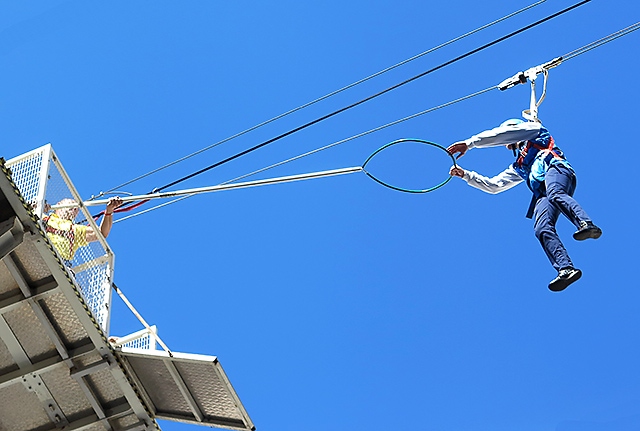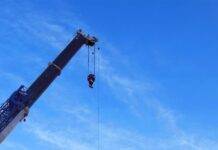
How to Calculate Safe Working Load of Wire Rope Sling
How to Calculate Safe Working Load of Wire Rope Sling : In industries where lifting and rigging are essential operations, ensuring safety is paramount. Wire rope slings play a crucial role in these operations, but determining their safe working load (SWL) is vital to prevent accidents and ensure efficient operations. In this comprehensive guide, we will delve into the intricacies of calculating the safe working load of wire rope slings.
1. Introduction
Wire rope slings are invaluable tools for lifting heavy loads safely. However, using them without considering their safe working load can lead to catastrophic accidents. This article will guide you through the process of calculating the SWL to ensure that your lifting operations are not only efficient but also secure.
2. Understanding Wire Rope Slings
Types of Wire Rope Slings
Wire rope slings come in various types, each designed for specific lifting tasks. Common types include single-leg slings, multi-leg slings, and endless slings. Understanding the type you’re using is crucial in determining its SWL.
Construction and Components
Wire rope slings consist of multiple strands of wire twisted together to form a strong, flexible cable. The material used and the number of strands determine the sling’s strength. Stainless steel and galvanized steel are popular choices for their corrosion resistance.
3. Factors Affecting Safe Working Load
Angle of Use
The angle at which you use the wire rope sling significantly impacts its SWL. Different angles reduce the sling’s capacity due to increased stress.
Diameter of Wire Rope
Thicker wire ropes have higher SWLs. Knowing the diameter of your wire rope is essential for accurate calculations.
Sling Configuration
How you configure the sling matters. Single-leg slings have a different SWL than multi-leg slings. Understanding the configuration is vital for safety.
4. Calculating Safe Working Load
Step 1: Determine the Angle of Use
Measure the angle between the sling and the load. The angle should be in degrees for precise calculations.
Step 2: Identify the Diameter of the Wire Rope
Measure the diameter of the wire rope in inches.
Step 3: Consider Sling Configuration
Know whether you are using a single-leg, multi-leg, or endless wire rope sling.
Step 4: Calculate SWL Using the Formula
Use the appropriate formula to calculate the SWL based on the factors mentioned above.
Example
Scenario: You have a single-leg wire rope sling with the following specifications:
- Diameter of the wire rope (D) = 0.5 inches
- Angle of use (θ) = 60 degrees
- The sling configuration is single-leg.
Step 1: Determine the Angle of Use (θ) In our scenario, the angle of use is 60 degrees.
Step 2: Identify the Diameter of the Wire Rope (D) The diameter of the wire rope is 0.5 inches.
Step 3: Consider Sling Configuration In this case, we are using a single-leg wire rope sling.
Step 4: Calculate SWL Using the Formula
The formula to calculate SWL for a single-leg wire rope sling is:
SWL = (D² * 10) / sin(θ)
Now, plug in the values:
SWL = (0.5² * 10) / sin(60 degrees)
SWL = (0.25 * 10) / √3/2
SWL = 2.5 / √3/2
To rationalize the denominator, multiply both the numerator and denominator by √3:
SWL = (2.5 * √3) / (√3 * √3/2)
SWL = (2.5 * √3) / (1.5)
SWL ≈ 1.73 * 2.5
SWL ≈ 4.33 pounds (rounded to two decimal places)
So, the Safe Working Load (SWL) of your single-leg wire rope sling, given the specifications, is approximately 4.33 pounds.
Please note that this is a simplified example, and in a real-world scenario, you should also consider safety factors and consult relevant industry standards and guidelines to ensure safe lifting operations. Additionally, the unit of measurement may vary depending on your location and industry (e.g., pounds or kilograms). Always use the appropriate units for your calculations and follow safety regulations.
5. Safety Factors
Why Safety Factors Matter
Safety factors are critical to account for uncertainties in lifting operations. They ensure that the SWL is conservative and minimizes the risk of overloading.
Recommended Safety Factors
Learn about the industry-standard safety factors to apply in your calculations.
6. Inspection and Maintenance
Regular Inspection
Frequent inspections are essential to detect wear, damage, or corrosion in the wire rope sling.
Proper Storage
How you store your wire rope sling can affect its longevity and safety.
7. Importance of SWL Compliance
Understanding and adhering to SWL guidelines is not only a safety requirement but also a legal obligation in many industries. Non-compliance can lead to severe consequences.
8. Conclusion
Calculating the safe working load of wire rope slings is fundamental to ensuring the safety and efficiency of lifting operations. By following the steps and considering the factors mentioned in this guide, you can minimize risks and maintain a secure working environment.
How To Calculate Frequency Rate, Severity Rate, and Incident Rate
How to Calculate Dead Load and Live Load of Scaffold with Practical Examples
How to Calculate SWL of Scaffold with Practical Examples
How to Calculate Severity Rate with Practical Example
How to Calculate Incident Rate with Practical Example
9. FAQs
Q1: What happens if I exceed the safe working load of a wire rope sling?
Exceeding the SWL can lead to sling failure, causing accidents and injuries. It is crucial always to operate within the specified limits.
Q2: Can I use the same formula for different types of wire rope slings?
No, different types of slings require different formulas. Be sure to use the appropriate formula for your specific sling.
Q3: Are there any regulations governing the safe use of wire rope slings?
Yes, various safety regulations and standards, such as OSHA, govern the safe use of wire rope slings. Familiarize yourself with these regulations to ensure compliance.
Q4: How often should I inspect my wire rope sling?
Regular inspections should be conducted before each use and periodically as recommended by safety guidelines and the manufacturer.
Q5: Where can I find more information on safe working loads and wire rope sling safety?
You can refer to industry-specific guidelines, manufacturer manuals, and safety organizations for detailed information on safe working loads and wire rope sling safety.
This comprehensive guide equips you with the knowledge needed to calculate the safe working load of wire rope slings. By following these guidelines and prioritizing safety, you can ensure that your lifting operations are both efficient and secure.

























Dear sir ….
Wire rope swl calculation is
Swl =d^2*8
Very helpful.Do you have training manual/sections How can I get the training